On the Road with Domovina Birthright Program: Đakovo and Osijek
July 12, 2019 - As previously reported on TCN, the first Domovina Birthright Program is taking place in Croatia at the moment, an initiative between the American Croatian Association of Professionals, and the Croatian Government.
The idea of the program is to take the young adults of Croatian descent (ages 18 – 30), who wish to learn about their heritage, explore Croatia, connect with their Croatian identity and meet other young Croatian adults on an amazing trip to Croatia.
Kristiana Banđen is one of the 34 initial participants in the program, and she has kindly agreed to document her journey as she explores the country of her heritage. Over to Kristiana:for Day 3:
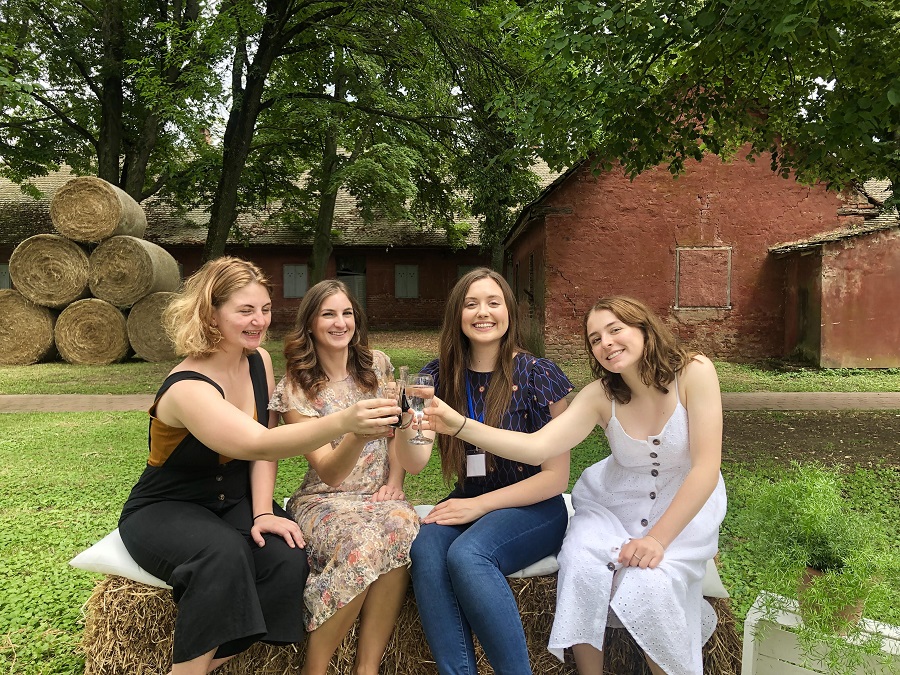
So far, this trip has been truly amazing!
This is my first time in the Slavonian region and it was absolutely breathtaking.
Croatians are known for being hospitable and the warm welcome and hospitality of everyone we have met in Slavonia has been beyond expectation. We are being treated like royalty.
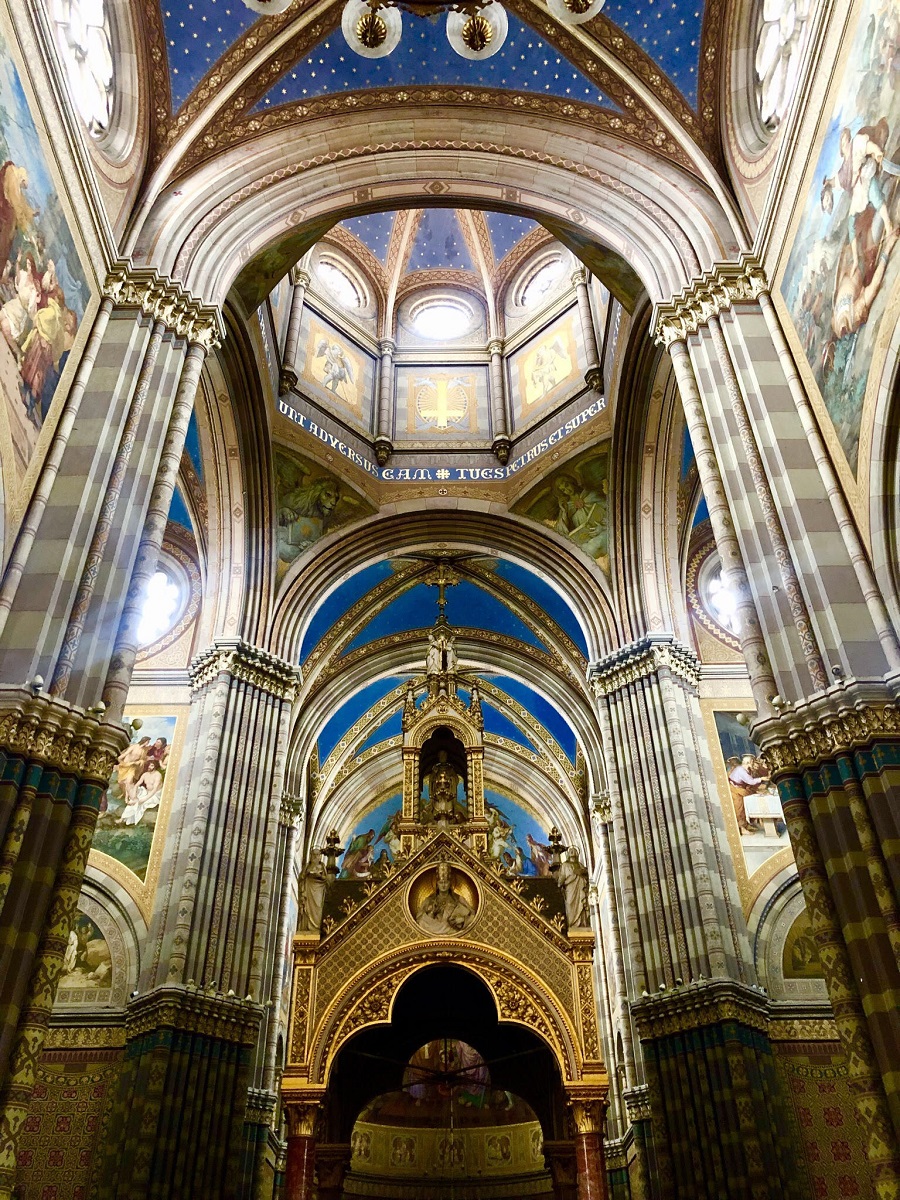
During our 3 day stay our lodging was in the student dorms, each room had bedding for two, small kitchen, and private washroom in the room. Our days are long with a start time of 7:30 am and ongoing until midnight.
Day 3, again did not disappoint we visited the University of Vukovar before making our way to Đakovo.
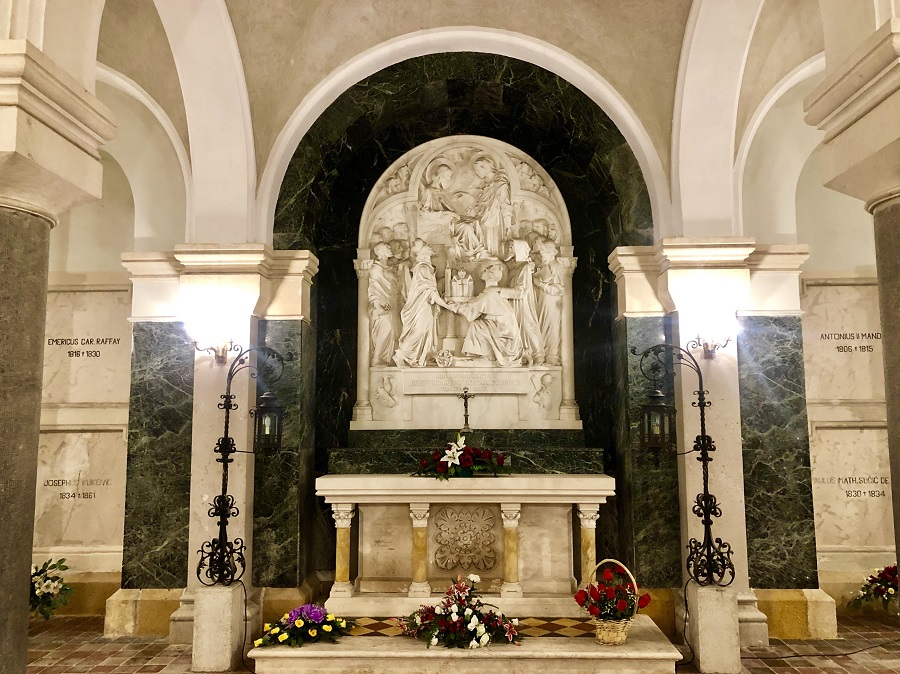
In Đakovo we were greeted by the Mayor Marin Mandarić who joined us in a tour of the cathedral and walked us over to City Hall where we were welcomed with refreshments. The cathedral left us all in awe. The amazing history, character and artwork was magnificent. We were fortunate to have been taken down to the basement to view the tombs, which is not open to the public.
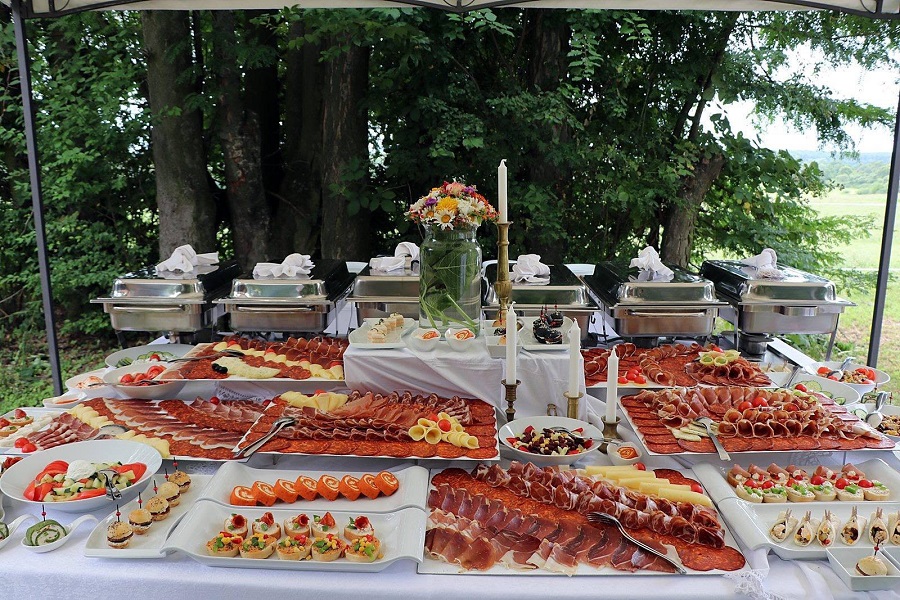
We enjoyed another amazing meal at National Lipizzan Stud Farm Đakovo along with domaći kolači. An amazing venue for weddings and events. Not to mention, the horses were beautiful!
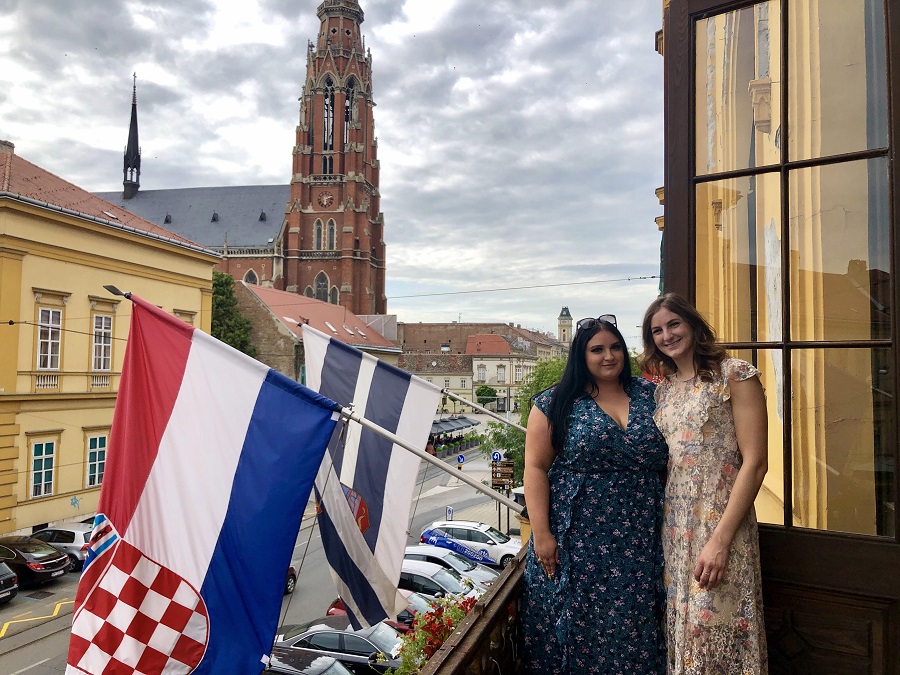
Our day continued to the University of Osijek where our group was divided to smaller groups, to have a private tour of the university and town. So far, it has been really great to have opportunities to speak to locals, giving many of us the opportunity to practice our Croatian and make connections. Our group leaders joined us for a private tour and performance in the Croatian National Theatre in Osijek accompanied with more vino of course!
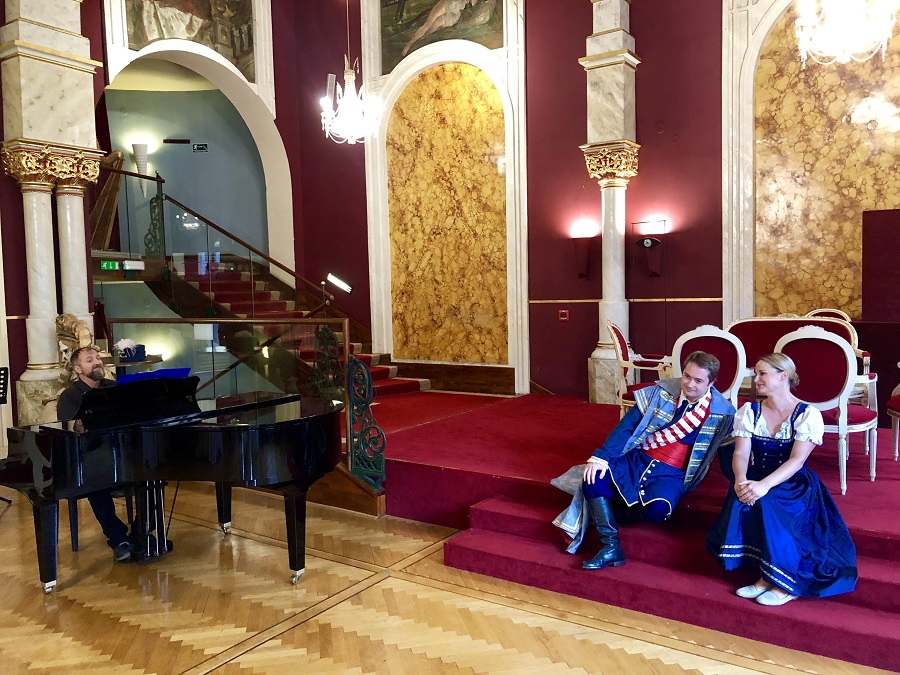
My favourite part of our third day of our trip was our evening dinner. Enjoyed in a beautiful property in Osijek, we were able to savour in our meal with the sounds of Mario Zbiljski playing tamburica joined with a group of musicians playing the cello and small guitars.
Follow #domovina2019 and @kristianabanden @kikibann for more insights.
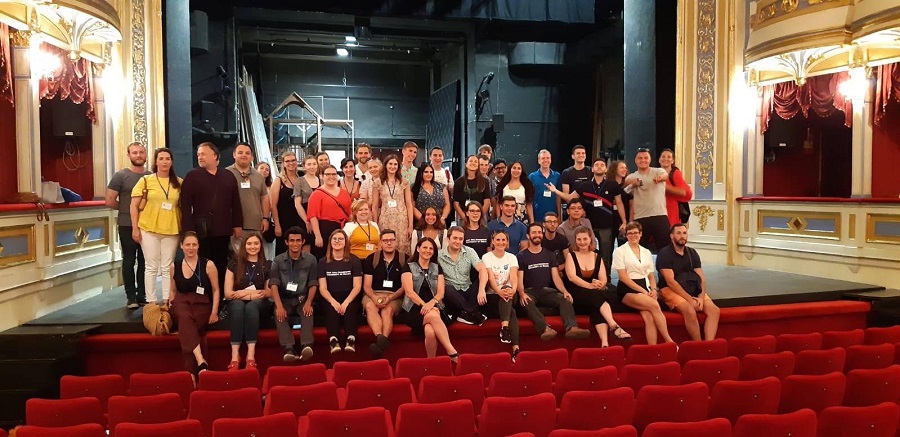
To follow the latest news from the Croatian diaspora, follow the dedicated TCN section.
Forget the Costly Coastline, Head to Slavonia for an Affordable Croatian Holiday
While tourists flock to Croatia’s coastal destinations, opt for the booming capital, or bake in the sun at its national parks, there’s another lesser-known area in the country that isn’t on the edge of overtourism - Slavonia.
Among all the developed destinations is Croatia’s east and Slavonia, though not even many Croatian citizens know about the varied tourism offer they can find here.
“I was born in Zagreb and grew up there, so I was surprised at how many tourist attractions the Vukovar-Srijem County actually offers to its visitors. I do not think anyone will regret coming for a holiday in this area because they will really have something to see,” says Director of the Nijemci Municipality Tourist Board, Katarina Šarkić, for Večernji List on July 7, 2019.
And there are plenty of opportunities for you to recharge. The offer is more diverse and easier on Croatian wallets, and the hosts are so hospitable you’d be hard pressed to find them anywhere else. So, for example, in the Nijemci Municipality, we have a Bird Watching Center as well as a tourist boat on the rivers Spačva and Bosut, Šarkić added.
Furthermore, the area also offers accommodation in “Robinson Crusoe” style tourism. Ilok is widely known for its vineyards and forts on the banks of the Danube. Vinkovci is the oldest city in Europe and is proud of the fact that the city's life is continuously growing over 8,000 years. It is also known as the only city in Croatia where two Roman Emperors were born - Valens and Valentinian. Vukovar is currently the most interesting for tourists as a city of war tourism, which witnessed the 1991 massacre. There is also the Park Forest Adica as well as the most modern swimming pools in Croatia.
In Vukovar-Srijem County, there are attractive museums, cycling trails and numerous events from year to year that draw more and more tourists from all over Croatia and abroad.
Osijek-Baranja County also offers a world of content, like the Kopački Rit Nature Park, which is the largest and most attractive preserved intact wetlands in Europe. Đakovo offers the famous Lippanzer horses, and those who prefer to visit thermal baths can go to Bizovac. The Drava also boasts the famous bathing area with the Kopika pools.
Baranja is even awakened by tourism. In addition to many events, guests in the area can enjoy numerous cycling trails, museums, excursion sites, and swimming pools. And the prices? Accommodation can be found for 150 kuna per person.
“Coffee is eight kuna, juices are 10 kuna, beer starts from 12. Pizza can be eaten for 30 kuna, and you can also find grilled meals around that price. A portion of grilled carp, say, you’ll pay 45 kuna. And pancakes for dessert are 20 kuna.”
"It is worth it, there is a lot of content and I believe that year to year it will be better and better. I think that all the tourist workers should cooperate, because we will achieve even better results,” Director Šarkić concluded.
To read more about travel in Croatia, follow TCN’s dedicated page.
Magnets and Souvenirs with Austrian Motifs Made in Slavonia
A touch of Slavonia, Croatia in Austria.
As Poslovni Dnevnik/Lucija Spiljak writes on the 4th of July, 2019, there are many souvenirs that tourists buy during their stay in the Austrian capital of Vienna, such as refrigerator magnets embellished with the most famous Austrian tourist attractions such as the Schönbrunn Palace.
It might be easy to imagine the Chinese churning out endless supplies of these small but meaningful little keepsakes, but many are actually made by a Croatian entrepreneur, Zoran Bašić, from Trnjani in Slavonia. In Trnjani, an Eastern Croatian region of Slavonia, lie the production plant and the headquarters of Decoupage Repromaterijal Bašić Art, the first Croatian souvenir magnet making factory. For years, this company from Slavonia has been present on the Austrian market, and this entrepreneur has been successful in domestic design, production and placement of souvenirs labelled "Made in Croatia".
It all began when Bašić, who is otherwise a skilled machinist by profession, started to work with the production of wooden jewellery and decorative objects made from wood following many hard years of work in the civil service. He eventually began exhibiting his creations at fairs across Slavonia.
Listening to the needs of the market, this entrepreneur from Slavonia saw an increase in demand in the areas in which he worked, which included room for other personalised products and all kinds of decorations.
Good work can be seen and felt far and wide, and four years ago, this talented Croatian entrepreneur received a request from a Viennese wholesaler for souvenirs who asked him to make some samples of fridge magnets.
After a year, Bašić's products were very successful over on the Austrian market, and now this factory in Slavonia is planning and aiming to place its products on the Croatian market as one of the few companies that offers such decorations with the mark of an original Croatian product.
In addition to excellent quality and innovation, these products are said to be more competitive and more affordable, and even cheaper than the infamous things the Chinese make, which continue to swamp and drown the market.
"The key to the success with the Austrians, where we're dominating, are small series' according to customer's wishes, quick delivery, ie, a fast response to the orders, with the flexibility of modifying the design again according to the customer's wishes.
With us, the customers themselves can participate in creating products that they want to make using our professional help. We produce our products manually according to our own ideas or the ideas of our customers, and the price is always the same, regardless of whether one has ordered a souvenir magnet, or a hundred,'' explained Bašić.
Ninety percent of all of their orders come from women who, as the entrepreneur adds, usually have a whole host of imaginative suggestions to make their own souvenir or, for example, a cake decoration. Considering the significant demand, Bašić's next business step will be to conquer new markets and expand the production plant which is located in Trnjani, Slavonia.
"I can see great potential in the development of decoupage reproduction material on the Croatian market, especially boxes which come in different sizes and shapes, some of which are patterned while most of them are designed according to the wishes and needs of clients who come to us with full confidence,'' concluded the the innovative entrepreneur from Slavonia, Zoran Bašić.
Follow our dedicated Made in Croatia page for much more.
Italy's Emilia-Romagna Region an Example for Slavonia, Baranja and Srijem
ZAGREB, July 5, 2019 - Investments in research, innovation and human resources are the key to Slavonia's development which requires the cooperation of all relevant stakeholders, it was heard at a conference on the development experience of the region of Emilia-Romagna and its complementarity with the regions of Slavonia, Baranja and Srijem, held by the World Bank office in Croatia in Zagreb on Friday.
The Ministry of Regional Development and EU Funds in July last year signed a three-year agreement with the World Bank on technical assistance in increasing growth and employment by implementing the Slavonia, Baranja and Srijem project. As part of the agreement, the World Bank has established cooperation with Italy's Emilia-Romagna region, focusing on the transfer of development experience to help in the economic development of Slavonia, Baranja and Srijem.
Emilia-Romagna is the seat of several global companies like Ferrari, Lamborghini, Maserati, Ducati and the Barilla food company. In the period between 2014 and 2020, it will absorb 1.15 billion euro in EU funds and it has defined its regional strategy by a business pact signed by the main stakeholders in the region.
Regional Development and EU Funds Minister Gabrijela Žalac said that Emilia-Romagna had achieved impressive results with regard to industry and human resources, which were important for Slavonia's future development.
She said that cooperation with that region would certainly continue and that representatives of local government, development agencies and the private sector would visit that Italian region to see which of the examples of good practice there could be implemented in the regions of Slavonia, Baranja and Srijem.
As regards cooperation with the World Bank on the Slavonia project, Žalac said that to date five vertical sectors had been identified - the wood industry, food production, information-communication technology, the metal-processing industry and tourism.
She said that project proposals were being prepared for EU funding in the current financial perspective and that five horizontal project proposals were being prepared with the World Bank concerning innovations, attracting foreign investment and human resources.
"It is up to us to start preparing already now bigger strategic projects for the next financial period, projects that can create value chains in the economy and change trends in Slavonia for the better," she added.
Asked whether some desirable models had already been identified in the Italian region, Žalac highlighted smart specialisation, specifically in the car industry, which, she said, was applicable not only to Slavonia but to any Croatian region.
"As regards the car industry, we have already compared what they are doing with what is developing at an incredible pace at Rimac Automobili and what will certainly be in the vanguard of future development," she underscored.
Žalac also singled out the bio-economy sector for the Croatian Pannonian region, noting that big projects in that sector were being prepared to apply for EU funding.
She said that more should be invested in research, development and innovation and that that could be achieved through EU funds.
The councillor for the coordination of European policies on development, education, vocational training, university, research and work for the Emilia-Romagna region, Patrizio Bianchi, recommended investment in human competencies for the stronger development of Slavonia and Croatia in general, including further training, investment in agricultural research and opening up the economy.
World Bank Country Manager for Croatia and Slovenia Elisabetta Capannelli assessed that changes had already occurred in Slavonia and that the WB was just a part of the solution.
The solution is primarily coming from the private sector and through good cooperation between the government and all relevant stakeholders in Slavonia and beyond. The World Bank can contribute with know-how, technical assistance, international experience as well as by encouraging cooperation, she said.
Capanelli said the key areas were agriculture, ICT, cooperation between universities, and innovation. She added that efforts were being made to improve the business environment and reform the education system at all levels and that all of that should contribute to the development of Croatia, including the region of Slavonia.
More Slavonia news can be found in the Lifestyle section.
Polycentric Development Crucial for Demographic Revival
ZAGREB, June 1, 2019 - Osijek-Baranja County observed its day on Saturday, with President Kolinda Grabar-Kitarović saying at a County Assembly session in Osijek that an even and polycentric development of Croatia was crucial for the demographic revival of the Slavonia region and all of Croatia, and that in the autumn her task force would present measures for fiscal and functional decentralisation and well as a more even regional development.
The president said Osijek-Baranja County had made noticeable progress in its development and that the government's Slavonia-Baranja-Srijem project was having a good and have an even better impact.
She said it was necessary to intensify agricultural development efforts, and that a resolute and swift state as well as local intervention was necessary to stop emigration.
The president said it was excellent news that GDP went up 3.9% in Q1 as it would facilitate debt servicing and real growth, and that it was even better news that the growth was based not just on consumption, but production and exports as well.
She voiced hope that investment and exports would help GDP growth to reach 5%, which she said was feasible, provided there is more unity, organisation and determination to effect change.
We must work fast as time is not on our side, the president said, adding that politics must facilitate work, education, creativity, enterprise, democracy and access to foreign markets.
Addressing young people who are not emigrating but "building successful enterprise and life stories," she said "We need your enthusiasm and optimism. To those who left, I wish to say that coming back does not mean failure. On the contrary, bring us your experience, be the creators of progress."
The prime minister's envoy, Agriculture Minister Tomislav Tolušić, said the government earmarked 19 billion kuna for the Slavonia-Baranja-Srijem project.
He said Osijek-Baranja Country had absorbed 1.5 billion kuna in Rural Development Programme funds over the past three years, and that over 250 projects were being drawn up to increase the competitiveness of its agriculture.
Prefect Ivan Anušić said the projects launched in the county were worth nearly 3 billion kuna and that the bulk of the money came from EU funds and in cooperation with the government. They include energy-efficient buildings, irrigation, a new hospital, new buildings, two new schools and a regional fruit and vegetable distribution centre.
More Slavonia news can be found in the Lifestyle section.
A Dying Trade: Marko Zidar is the Only Shoemaker in Town - Našice, Slavonia
The situation in Slavonia is far from a blooming one, at least in economic terms, and while Croatian pensions continue to be small, often forcing their recipients to continue to work in any way that they can, for some that just isn't sustainable, not because of the economic situation as such, but because of time.
As Novac/Jutarnji writes on the 21st of May, 2019, despite the fact that shoemaker Marko Zidar has now retired, he chose to continue to work. He says that he does so for some additional income, because Croatia's pensions are small, but also because of the love he has towards this work. He has been the only shoemaker in Našice, a town in Slavonia in Eastern Croatia, for more than thirty years, and he continues to work because this occupation is considered to be scare, Glas Slavonije writes.
His work is well known to Našiče's locals, but over the last several years, the locals of this town in almost overlooked Slavonia have barely visited him. Why? Because there is no longer any high quality footwear that needs to be repaired.
"It's easier to buy [shoes] cheaper now, and people with lower wages can't even afford leather, expensive but high quality footwear," says Zidar.
He repairs women's, men's, children's shoes, those that need only a little stitching up, those that are completely worn down, those which just need a new heel, and also those that just need a bit of ''scrubbing up''. In additon to working with shoes, he also works with purses and belts, but everything is much less than it ever was before in this dying profession. Although the cost of his work has been sustainable and has barely changed for almost twenty years now, Zidar's number of customers has dropped significantly, and the materials he needs are more expensive, so this type of job is carrying with it less and less profit, not to mention sense.
"The problem is the raw materials that I can't get in Croatia, I've got to order it from Germany and Italy," says Zidar, and concludes that he can't make a decent living from that job. He's been known to have repaired as many as forty pairs of shoes in a single day, but today, he deals with that amount in one week, if he's lucky. Today, he grabs work here and there and whenever he can, and it happens that people bring their shoes to the repair and then just leave them there, not returning to pick them up again.
"I waste material and my time, and I can't get either of them back - it's disappointing," says the shoemaker from Slavonia.
He studied this craft in Zagreb and this profession did very well when such a trade was in high demand, once upon a time, but then things began to change rather drastically. Despite the change ''of the wind'', Zidar never regretted his choice. Now, after thirty years of work as an entrepreneur, and after having retired, he nurtures his skill and his craft. At the beginning back when he started his own business, he worked all day and all night and earned very good money, even training his son in the same skill.
Make sure to follow our dedicated lifestyle page for more information on Slavonia and much, much more.
Cheese and Wine Festival Held in Valpovo
On Saturday, May 11, the second cheese and wine festival took place in Valpovo. The festival venue, as last year, was Valpovo’s medieval-baroque complex of the Prandau-Normann castle. There are a number of events dedicated to wine being held, but this event is unique because it puts the emphasis on both the wine and the cheese, as well as on how to pair the two. Some of the best wine and cheese producers from Slavonia, Baranja and Srijem took part.
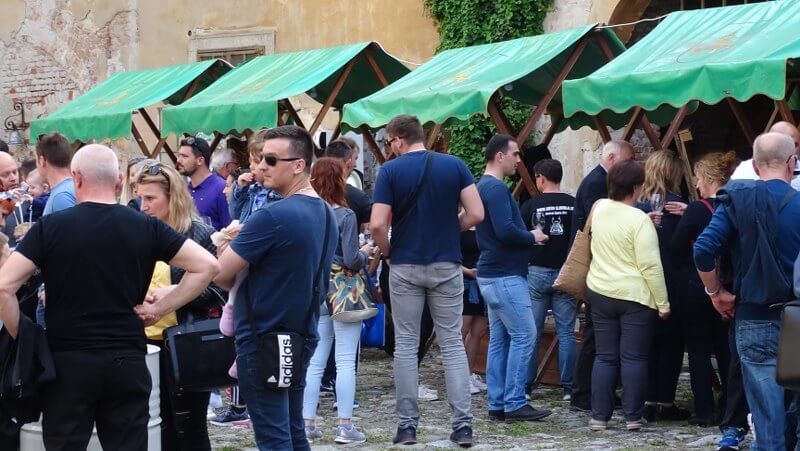
With the exception of the Podolski winery from Križevci, all the other wineries were from the Danube region, and it can be said that the Danube is the link which connects them all. Although it is not perceived as such by the public, Valpovo could be said to be located in the Danube region. Namely, the only suburb of Valpovo situated on the Drava river is located 42 kilometres from the point when the Drava meets the Danube River.
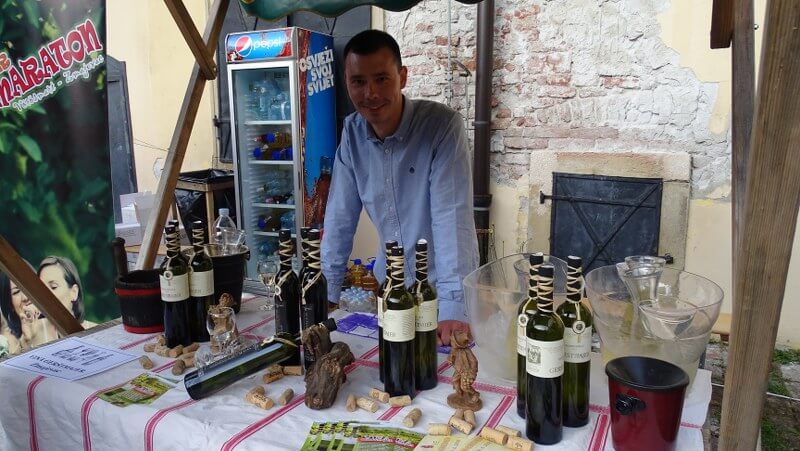
The Baranja wine area was presented by wineries Gerštmajer, Josić, Kolar, Kalazić, Svijetli Dvori, Szabo and Zajec. The Gerštmajer winery was represented by Ivan Gerštamjer Zelember, the fifth generation of the Gerštmajer wine dynasty from Baranja. Their wines are already well-known to everyone; for most connoisseurs, they represent the essence of traditional, original Baranja wine-making.
The other winemakers from the Baranja area were represented by the head of the Baranya Julia wine shop from Zmajevac, Gabriella Gerštmajer, who is also the vice-president of the Surduk association, organiser of legendary events in Zmajevac such as the Wine Marathon.
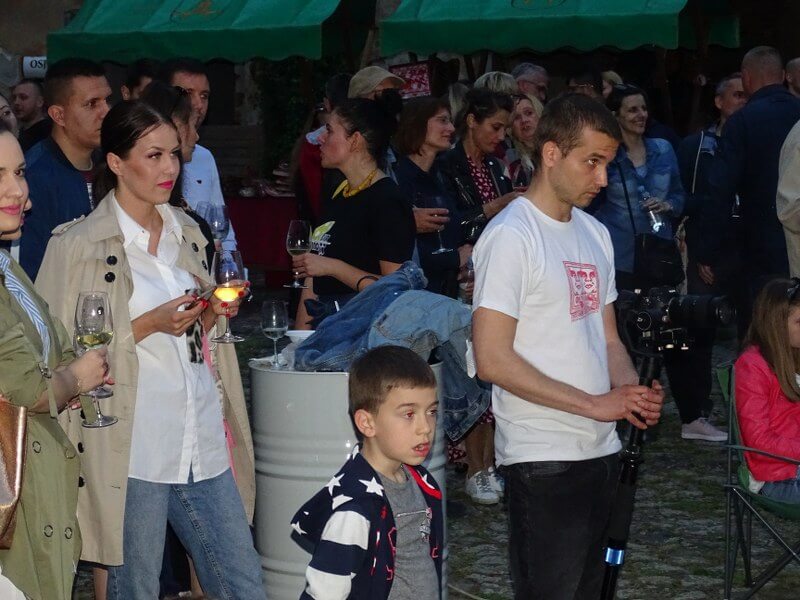
The Josić winery also comes from the Baranja wine capital Zmajevac. In addition to their wines, also highly acclaimed is the Josić winery’s restaurant, where their wines are served and paired with Baranja delicacies. Recently they decided to rebrand the visual identity of their wines, but the quality has remained at an exceptional level.
The Kolar winery comes from Suza, a town connected to Zmajevac and through which you must pass if you are coming to the wine capital from the direction of Kneževi Vinogradi. The Kalazić winery is on the road that runs from Zmajevac to Batina. Svijetli Dvori and Szabo wineries can be found in the Karanac ethno-village. All Baranja wineries presented at the festival came from the Kneževi Vinogradi municipality, which is just one of nine local self-government units in Baranja.
The Erdut wine area is located to the southeast of Baranja. This area geographically belongs to Slavonia, and it was represented by wineries Danubio, Iuris, Magistra and Siber. The Ilok wine area was represented by the Buhač, Papak and TRS wineries.
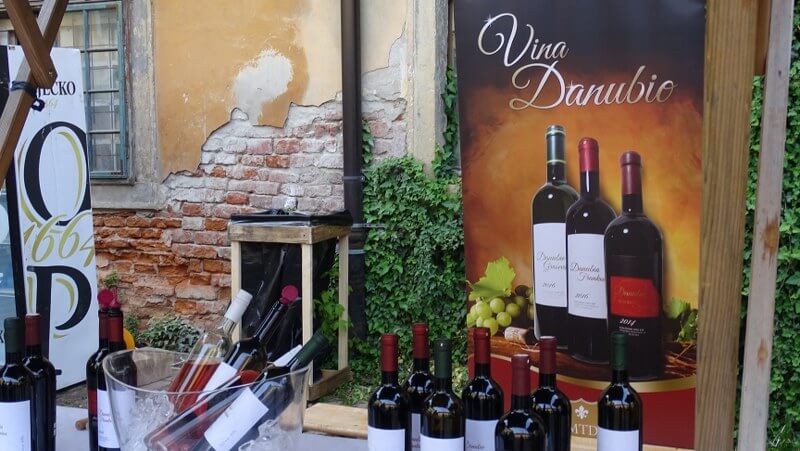
The cheese producers who came to the festival were family farms Geto from Lug, Glavaš from Bizovac, Gašić from Beketinci, Đurković from Marjančaci, Lehki from Gat, Pranjić from Drenovci and Mala Mljekara from Valpovo.
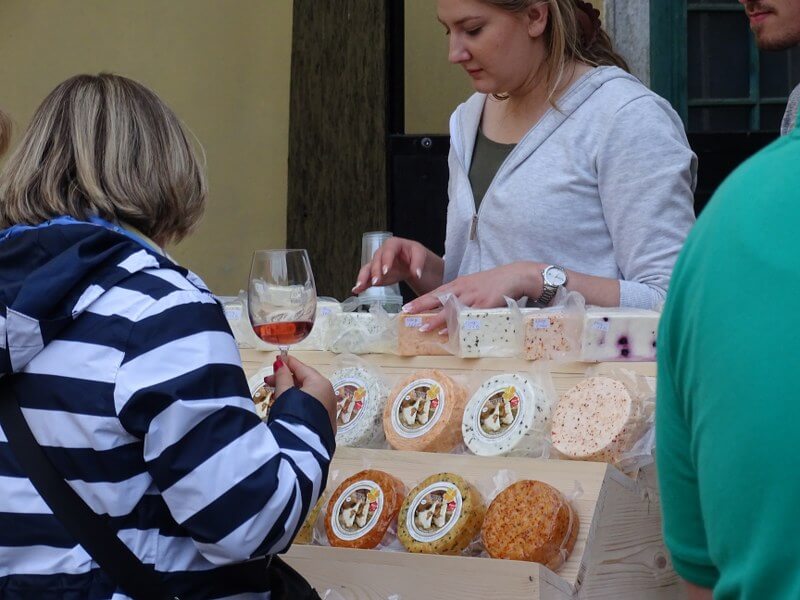
The Golubov family farm from Draž presented its elderberry juice, while family farms Brkić and Kraljik showed their cured meat products. The Horvat family farm from Duboševica prepared homemade pasta with poppy seeds and walnuts.
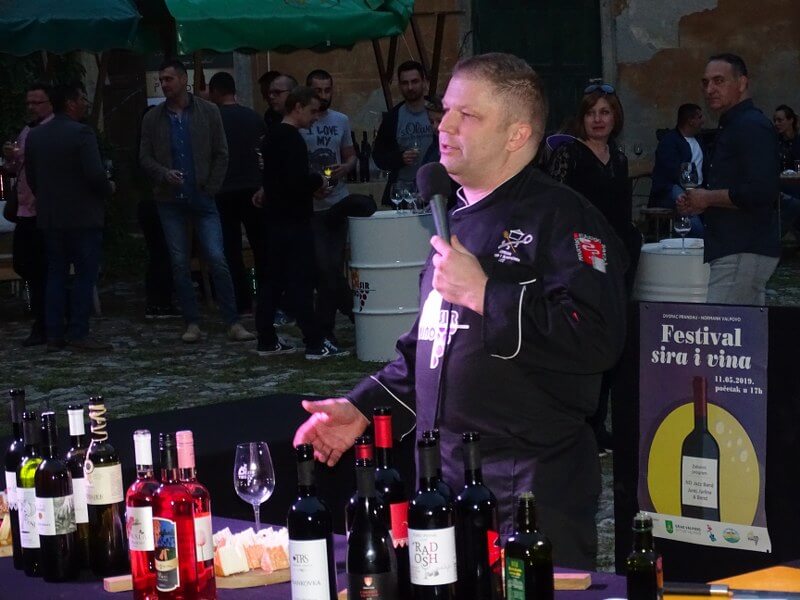
The highlight of the festival was the pairing of cheeses and wines, led by Tomica Đukić, the chef of the Osijek Hotel restaurant and the chief cook of the Croatian national football team.
More wine news can be found in the Lifestyle section.
Fajferica Gastro Show Held in Drenovci
After the Black Pig Restaurant in Čepin, this animal species now also has its festival! On May 10, Drenovci hosted the first Fajferica Gastro Show. Fajferica is the black Slavonian pig, the autochthonous pig created by crossbreeding the sows of the Swallow Belly Mangulica breed and boars of the Berkshire breed. Then the best sows were crossbred with boars of the Poland China pig. The breed was created in the second half of the 19th century at the Orlovnjak wasteland near Tenja, not far from Osijek, and was named after the owner of the estate, Count Dragutin Karlo Leopold Pfeifer.

The village of Drenovci is situated on the extreme south-eastern edge of Slavonia, also known as Cvelferija. Some would say that Cvelferija is located on the southwestern corner of Srijem and they would also not be mistaken. The boundary between Slavonia in the west and Srijem in the east is fluid, not strictly defined, and besides, the former Srijem County with its seat in Vukovar was an integral part of the old Slavonian kingdom, a subregion of Slavonia, so it is not wrong to say that Drenovci, as well as the whole of Cvelferija, is located in both Srijem and Slavonia. The name of this micro-region originates from the times of the Military Border (Latin: Confinium, German: the Militärgrenze) when the Sava River was a natural border that separated the Habsburg Monarchy from the Ottoman Empire.
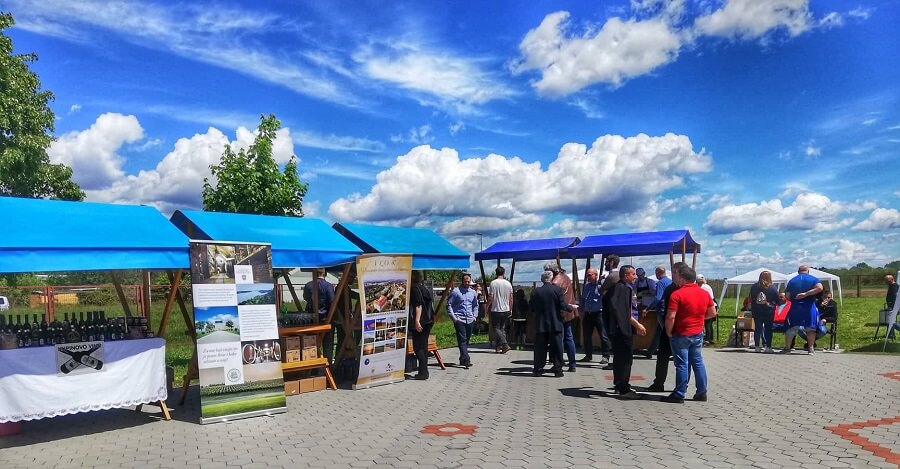
At its peak, the Military Border stretched 1,850 kilometres in length, from the Adriatic Sea to the province of Erdelj in present-day Romania, consisting of seventeen regiments, of which three regiments (the seventh, eighth and ninth) represented the Slavonian military frontier. The regiments were divided into companies, and the area of today’s Cvelferija comprised the 12th company of the Brod regiment. In addition to Drenovci, Cvelferija includes the villages of Vrbanja, Soljani, Strošinci, Đurići, Račinovci, Gunja, Rajevo Selo and Posavski Podgajci. The last time this area was in the media focus was during catastrophic floods five years ago. Fortunately, many positive things are happening in this area, including the Fajferica Gastro Show.
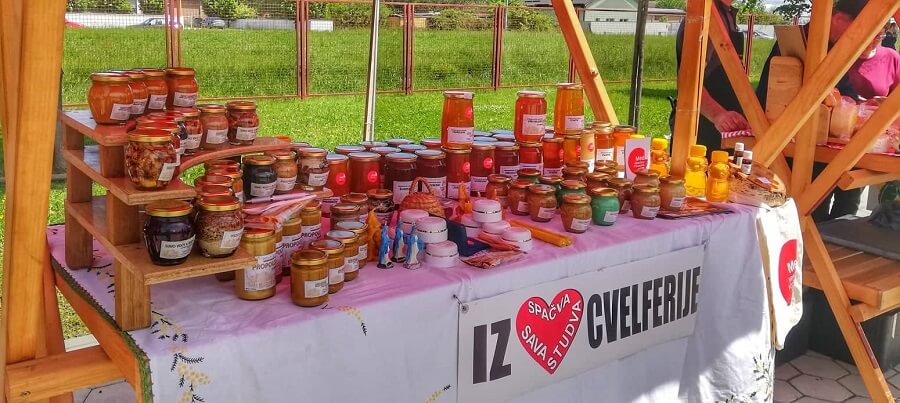
The event took place at the Agricultural Entrepreneurial Incubator in Drenovci. It started at about 10 am with a small-scale fair of autochthonous products. Specialities made from black Slavonian pigs were paired with red wines of Iločki Podrumi and the dark beers of the Valens craft brewery from Vinkovci.
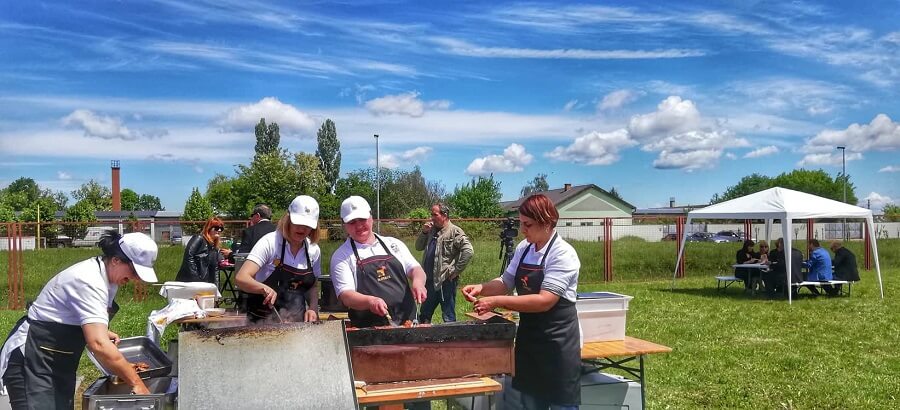
Chef Tomislav Špiček prepared treats for all the visitors. There is no need to spend too much time introducing him since he is well-known from various culinary programmes broadcast on national television stations.
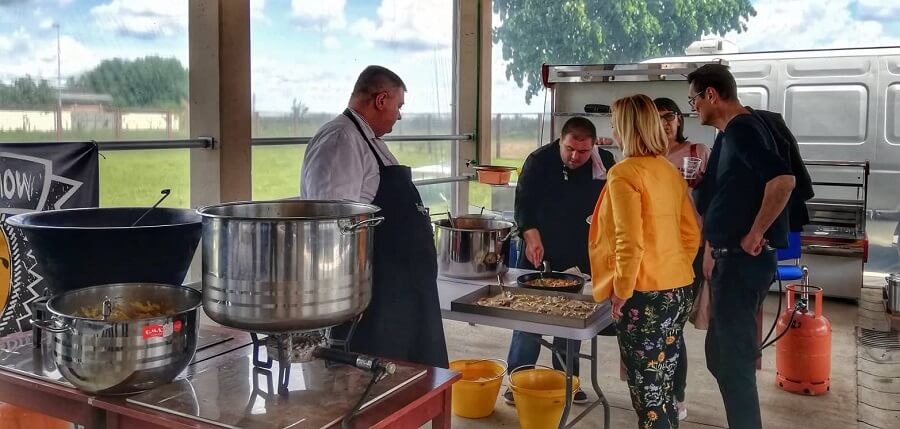
Dark chocolate with pieces of Kulen was presented by Margareta Vučak, owner of the Veseli Vagon chocolate shop, whose motto is “fresh & furious”. The festival also included numerous lectures, with interesting topics such as “Why do we love pork?” and “Are fats being unfairly excluded from the menu?”
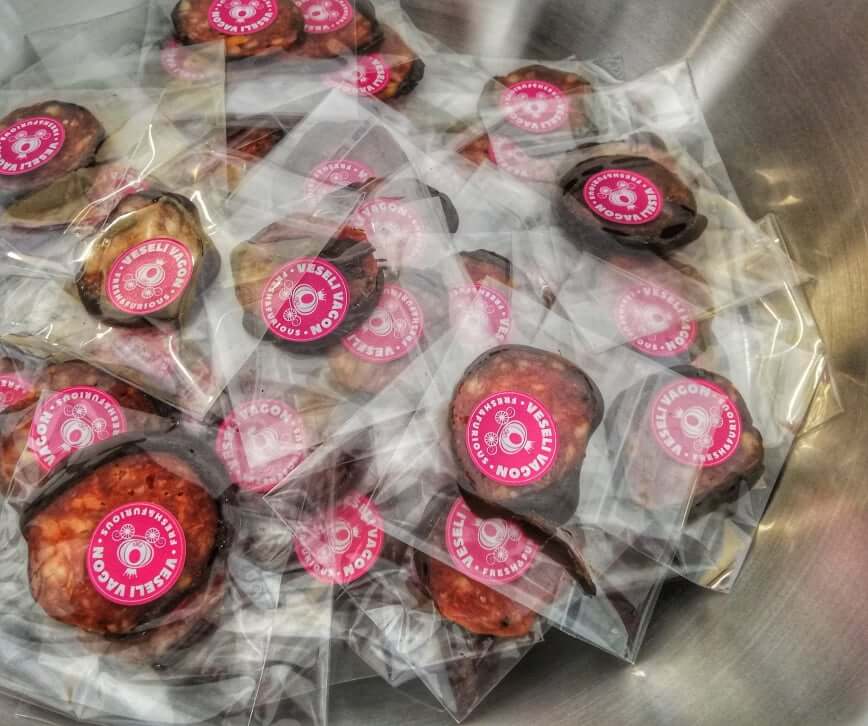
Fajferica Gastro Show also included a sales section, with black Slavonian pigs being on offer. I saw personally that a dozen of them were sold to the Karlovac area, indicating there is interest for the Fajferica pigs even beyond the borders of Slavonia and Baranja.
Cured meat products made from black Slavonian pigs, delicacies prepared by celebrated chefs, crafts beers and brilliant Srijem wines, unusual combinations of Kulen and chocolate, all this is the reason why the first Fajeferica Gastro Show fully met the expectations. I hope that the event will become a traditional one and that the next year it will make an additional step forward.
More Slavonia news can be found in the Lifestyle section.
Vukovar's Hotel Dunav Sold, New 200 Million Kuna Hotel to be Constructed
As Poslovni Dnevnik writes on the 4th of May, 2019, Vukovar Mayor Ivan Penava and the CEO of the Swiss company Immo Invest Partner, Džek Djordić, signed a contract on the sale of the Dunav (Danube) Hotel in Vukovar on Saturday, and the Swiss company has thus announced the construction of a new four-star hotel, in which it will invest a massive 200 million kuna.
"This is a strategically important property in Vukovar, the building of the former Dunav Hotel, which has attracted a lot of interest from the public," stated Penava, pointing out that the building is located in an extremely valuable location at the very mouth of the Vuka along the Danube, but also because it involves a building that has not been in function for nine years now.
He added that the city, owing to the fact that the hotel had remained totally out of use for a long time, bought the former Hotel Dunav in order to sell it to a hotel business that had already established its branch office in Vukovar. The city will do everything to make the investor feel welcome with their investment which is strategic and considered to be at the state-level.
Deputy Mayor Marijan Pavliček recalled that the City of Vukovar had purchased Hotel Dunav for 10.3 million kuna, while a price of 10.7 million kuna was asked for at the public tender, and the aforementioned Swiss company offered 11.3 million kuna and paid the difference in accordance to the higher requested price.
"The investors are obliged to collect all of the necessary permits in the next eighteen months after which the parcel will be handed over to their ownership, after which a seven-year legal deadline for the construction and commissioning of the facility comes into force," Pavliček said, adding that the investors have promised a significantly shorter implementation deadline, more specifically until the year 2023.
Pavliček emphasised the fact that this is the biggest investment after the Homeland War in the tourist sector of Vukovar, which will open up welcome new jobs.
Immo Invest Partner's CEO Džek Djordić announced the construction of a four-star hotel with about 120 rooms, 240 beds, and which will include several restaurants, offices and a multimedia space in which about 200 million kuna will be invested, and the hotel should be open in 2023.
Immo Invest Partner Board Member Petar Đorđić thanked the mayor and his deputy for their engagement in the realisation of this deal and said that all those involved are great optimists and that the entire investment will be realised within the anticipated deadline.
Make sure to follow our dedicated business and lifestyle pages for much more.
200 Million Euro to Be Set Aside for Revitalisation of Vukovar
ZAGREB, May 2, 2019 - The government on Thursday endorsed a programme for the reconstruction of municipal and power infrastructure in the town of Vukovar, and the 1.5 billion kuna programme encompasses 59 projects.
The scheme was endorsed a day before Vukovar marks its day on 3 May.
Concurrently, the Fund for Reconstruction and Development of the Town of Vukovar has been increased by 50% or 20 million kuna.
The ministry of maritime affairs, transport and infrastructure coordinates the implementation of the programme, and Minister Oleg Butković told the government today that the realisation of the projects would improve transport connectivity and enhance the local economy as well living standards in eastern Slavonia.
A total of 19 projects, worth 727 million kuna, are supposed to upgrade road and rail infrastructure.
There are 13 planned projects, worth 315.5 million kuna, for the water supply and drainage infrastructure.
Furthermore, 50.5 million kuna is to be invested in a project to upgrade the electrical network.
Also, 18 projects, estimated at 143 million kuna, which are part of the Operational Programme Competitiveness and Cohesion, are to be conducted for the purpose of the town's economic and social development.
The implementation of a project for the revitalisation of formerly war-hit small towns will cost 86.6 million kuna and a strategic project for the archaeological park Vučedol is estimated at 118 million kuna.
Prime Minister Andrej Plenković said that the large-scale programme was hammered out in close cooperation with the town of Vukovar.
Plenković said he would visit the town tomorrow on the occasion of its day.
More Vukovar news can be found in the Lifestyle section.


